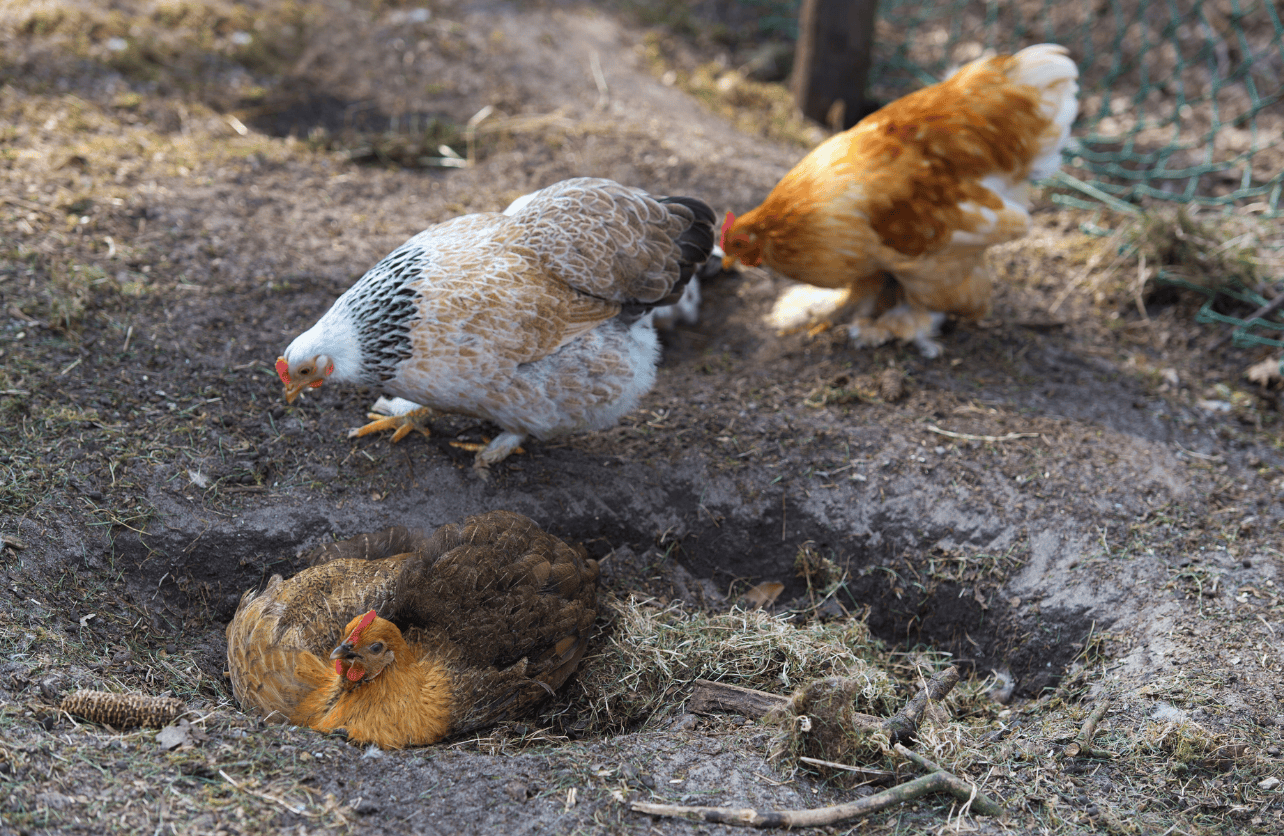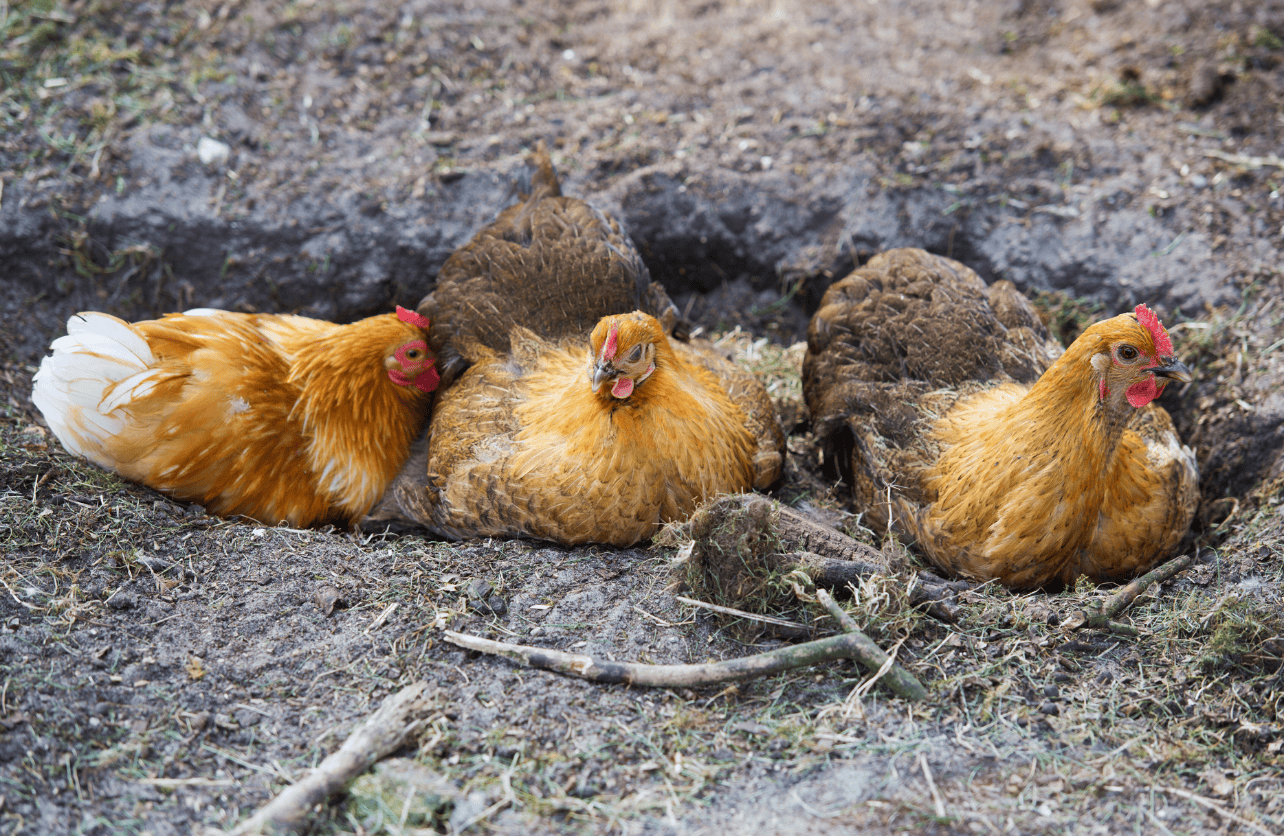Understanding Chicken Behavior: Why Your Hens Need a Dust Bath

Chickens are fascinating creatures with unique behaviors, and one of their most endearing habits is taking a dust bath. While it might look like your hens are just playing in the dirt, dust bathing is a critical part of their health and well-being. In this guide, we’ll explore why dust baths are essential, how they benefit your flock, and tips for creating the perfect dust bath area in your coop.
Why Do Chickens Take Dust Baths?
Dust bathing is a natural instinct for chickens. They roll, fluff, and shake dirt into their feathers, but this isn’t just for fun. Dust baths serve several key purposes:
- Parasite Control
Dust baths help chickens combat mites, lice, and other pests. The fine dirt particles work into their feathers and skin, suffocating and dislodging parasites. This natural behavior is critical for keeping your flock comfortable and healthy. - Feather Maintenance
By dust bathing, chickens keep their feathers clean and well-conditioned. It helps to remove excess oil and dirt, ensuring their plumage remains functional and protective. - Stress Relief
Dust bathing is a social and enjoyable activity for chickens. It reduces stress and keeps them happy. Watching your flock take a communal dust bath can also be a heartwarming sight for chicken keepers!
How to Create the Perfect Dust Bath Area

Providing your chickens with a dedicated dust bath area is easy and can be customized to fit your coop setup. Here’s what you need to know:
Choose the Right Location
Select a dry, shaded spot in the coop or run to set up the dust bath. This ensures the area won’t become muddy after rain and keeps your chickens cool while they bathe.
Select the Right Materials
A good dust bath mixture includes:
- Sand: The base material, providing fine particles for effective bathing.
- Dirt: Adds a natural feel and texture.
- Diatomaceous Earth (Optional): Helps enhance parasite control but should be food-grade to ensure safety.
- Ash: Wood ash from untreated wood is a great addition for extra pest control.
Build a Container
While your chickens may use any dry patch of dirt, providing a designated container keeps the dust bath clean and contained. Use a shallow box, old tire, or plastic tub that’s large enough for multiple chickens to use at once.
Maintenance Matters
Remove debris and refresh the mixture as needed to keep the dust bath area clean. Regular maintenance ensures the area remains effective and inviting.
Signs Your Chickens Need a Better Dust Bath
If your chickens are scratching excessively, losing feathers, or appearing stressed, their dust bath setup might need some attention. Check that the area is dry, has enough room, and includes the right materials to meet their needs.
The Role of Dust Baths in Coop Accessories
Dust baths are an essential addition to any well-maintained chicken coop. Alongside other accessories like nesting boxes, perches, and feeders, a quality dust bath contributes to a healthier and happier flock. When combined with regular cleaning and proper ventilation, your coop will become a haven for your chickens to thrive.
Final Thoughts
Dust baths are more than just a quirky behavior—they’re a vital part of chicken care. By setting up a proper dust bath area in your coop, you can ensure your hens stay pest-free, well-groomed, and stress-free. It’s a small investment that pays off in healthier, happier chickens.
Your Pet’s Best Interest, Always
At Pet Institute, we take pet care seriously. We're dedicated to transparency, impartiality, and the well-being of your pets in every article, review, and recommendation we provide. Our unwavering commitment to these principles ensures that you, our valued reader, always receive reliable and unbiased information. Let us be your trusted guide in the world of pet care and companionship.